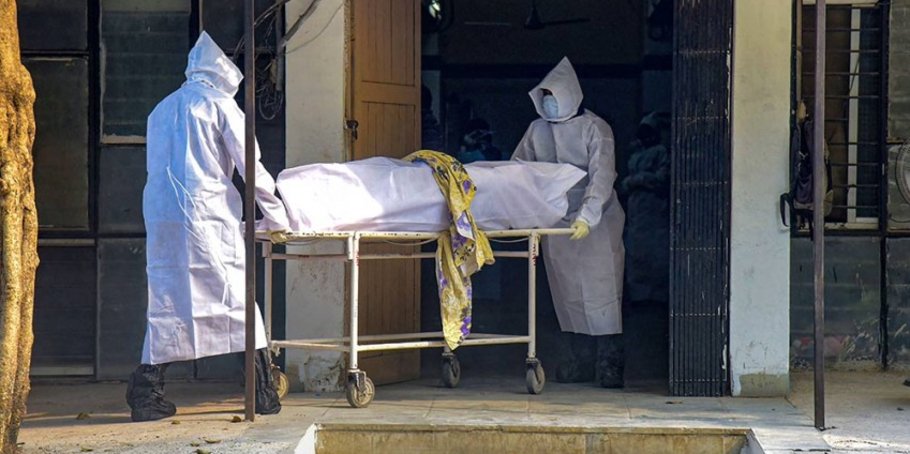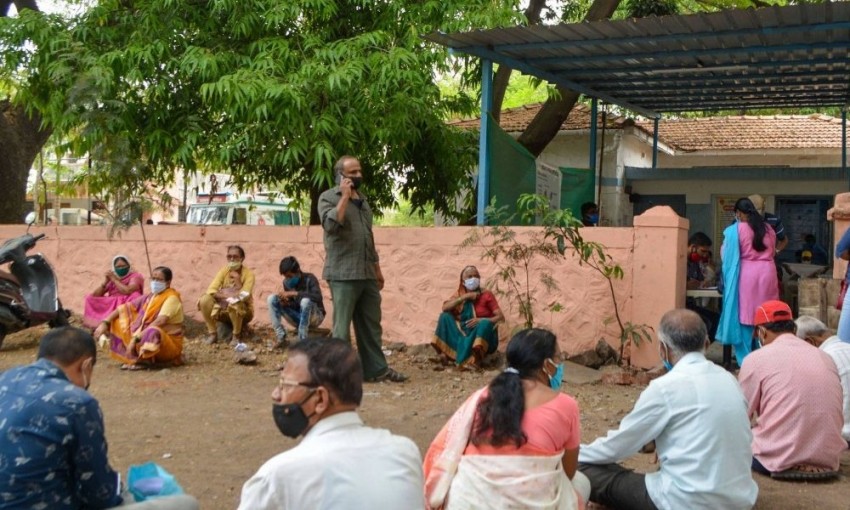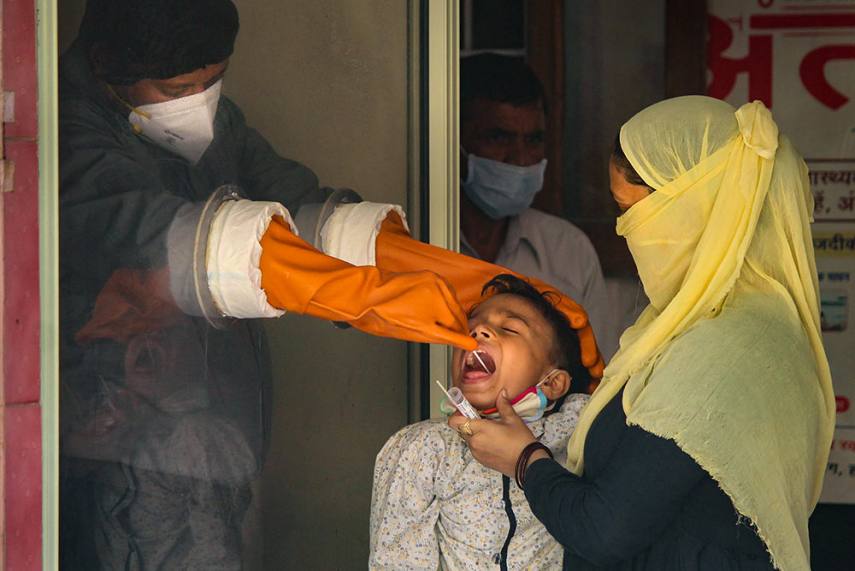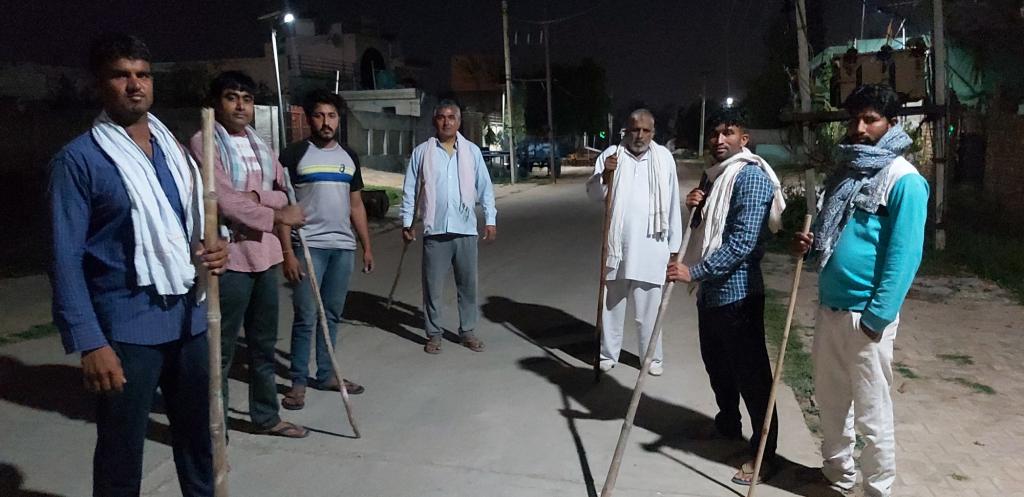
- Home
- India
- World
- Premium
- THE FEDERAL SPECIAL
- Analysis
- States
- Perspective
- Videos
- Sports
- Education
- Entertainment
- Elections
- Features
- Health
- Business
- Series
- In memoriam: Sheikh Mujibur Rahman
- Bishnoi's Men
- NEET TANGLE
- Economy Series
- Earth Day
- Kashmir’s Frozen Turbulence
- India@75
- The legend of Ramjanmabhoomi
- Liberalisation@30
- How to tame a dragon
- Celebrating biodiversity
- Farm Matters
- 50 days of solitude
- Bringing Migrants Home
- Budget 2020
- Jharkhand Votes
- The Federal Investigates
- The Federal Impact
- Vanishing Sand
- Gandhi @ 150
- Andhra Today
- Field report
- Operation Gulmarg
- Pandemic @1 Mn in India
- The Federal Year-End
- The Zero Year
- Science
- Brand studio
- Newsletter
- Elections 2024
- Events
- Home
- IndiaIndia
- World
- Analysis
- StatesStates
- PerspectivePerspective
- VideosVideos
- Sports
- Education
- Entertainment
- ElectionsElections
- Features
- Health
- BusinessBusiness
- Premium
- Loading...
Premium - Events

How a failed govt left rural India at the mercy of 'havans' and 'jholachap doctors'
Government doctors and other health experts say people in rural areas do not go to hospitals despite symptoms, preferring self-treatment.

“It was just another regular day for me. I woke up at 4 am to fetch milk from my buffaloes. My father, who usually wakes up before me, was asleep. He had the flu earlier that night, so I thought he must be taking a rest. After milking my buffaloes, I went to sell the milk in the city and returned at 10 am. When I came back, my father was no more,” says Suraj Lather of Bas village in...
“It was just another regular day for me. I woke up at 4 am to fetch milk from my buffaloes. My father, who usually wakes up before me, was asleep. He had the flu earlier that night, so I thought he must be taking a rest. After milking my buffaloes, I went to sell the milk in the city and returned at 10 am. When I came back, my father was no more,” says Suraj Lather of Bas village in Hisar district of Haryana.
Suraj’s father, Rajmal Lather (67) succumbed to Covid-19.
“The night before dying he was experiencing symptoms like flu. We, including him, thought it was normal flu,” Suraj says.
It was the first such death in Bas village and later 62 more elderly people died in a similar manner.
“It took us some time to figure out that the deaths were taking place due to Covid-19,” says Suraj.
As the Covid positivity rate comes down in cities like Delhi and Mumbai, Covid-19 is creating havoc in rural India and most of the people there do not really understand that it was Covid.
More than 500 “mysterious deaths” were recorded in various villages of Haryana in the last two weeks. The situation is grim to the extent that when authorities tested people of Bas village for Covid-19, every second person tested positive, revealing a positivity rate of more than 50 per cent.
Another 51 people reportedly died at Titoli in Rohtak district. According to reports, the village had been sealed and declared as a containment zone. A COVID testing drive in the village found at least 25 per cent of samples turning positive.
“Every day, at least one death takes place even in the remotest villages due to Covid-19. Some villages are experiencing 2-3 deaths in a day. In my village, Baroda of Sonepat, 30 people have succumbed in the last 10 days. In another Sonepat village, nearly 100 out of 130 were tested positive, with a positivity rate of 77 per cent,” says a senior doctor at PGIMS, Rohtak.
Covid in villages
Covid-19 is causing deaths not only in rural Haryana but also in villages of Punjab, Uttar Pradesh, Rajasthan, Bihar, Madhya Pradesh, Assam and Gujarat. In the past 10 days, 50 persons have reportedly died of Covid-19 in villages across Patiala district of Punjab. The count may be higher as many deaths go unreported due to lack of testing, say health officials.
Suggesting a high case fatality rate (CFR) in rural areas of Punjab, Dr Sumeet Singh, an epidemiologist, says that rural deaths were contributing to around 34 per cent of the total fatalities whereas the rural case count was only 20 per cent of the total. The CFR in rural areas stood at 2.86, compared to 1.73 in the urban areas, he says.

In Uttar Pradesh, 26 people reportedly died at Kasba in Shahjahanpur and at least 10 people succumbed in Sadharanpur Khurd village of Inchauli area in Meerut district. Media reports suggest a sudden spike of deaths in rural West Champaran of Bihar too.
About 18 people died in the last 15-20 days in rural areas of Jaisalmer in Rajasthan. And in Chogath in Gujarat’s Bhavnagar district, 90 people succumbed in the last 20 days.
Data from 13 states suggest that there are more cases in villages and small towns than in big cities. In the 11 other states, cases are growing faster in rural areas.
In Chhattisgarh, the average data of the last seven days suggest that over 89 per cent of new cases were registered in rural areas. In Himachal Pradesh, 76 per cent of the new cases were recorded in rural areas. Bihar (76 per cent), Odisha (76 per cent), Rajasthan (72 per cent) and Andhra Pradesh (72 per cent) too have shown a higher ratio of cases in rural areas.
In Maharashtra, while rural areas had only 32 per cent of the cases as on April 9, a month later their share increased to 56 per cent. In UP and Jammu and Kashmir, rural areas now have 65 per cent of the cases. In Karnataka, where cities still have more cases, the share of rural areas has risen from 25 per cent to 44 per cent over a month.
Quacks, ‘havans’, self-medication rule in rural
While the situation might seem morbid, people in the villages seem to be in denial mode, apparently unaware about the second wave of Covid, the new variants or symptoms, and even about the government’s communication initiatives, and to a certain extent misled by fake doctors and religious gurus.
“Many people are dying in our village but not because of Covid, but due to high fever,” says Bimla Devi from Farmana Khas village of Rohtak district in Haryana where at least 23 people have lost their lives.
“There is no Covid in the villages. It is mostly in the cities,” says Fool Singh of Barsola village in Haryana district. “Even if it comes to our village, we will deal with it. Covid is normal cough and fever. We know how to deal with cough and cold.”
When asked where he got the information that Covid is normal cough and cold, Fool says everyone in the village is saying that and even TV, radio and other communication channels are also saying that Covid symptoms are cough and cold.
“Last week Baba Ramdev said the same. He said weak people with less immunity die from it. We are strong. We know how to treat cough and cold,” he says firmly.
With little awareness and poor facilities, villagers turn to fake doctors, commonly known as ‘jholachap doctors’, who visit various villages giving the same prescription and medicines for every disease to make money.

Apart from jholachap doctors, villagers also believe in Ayurveda to treat diseases and rely on it for Covid-19. In many villages of Haryana, people think that ginger and garlic can cure Covid-19. There are also mass ‘havans’ (fire ritual) arranged in the villages to clean the air.
Experts however say that home remedies like using ginger and garlic will not work on Covid-19 virus as it attacks the lungs very rapidly and blocks the oxygen supply.
“Ginger and garlic can be used to cure normal flu, not Covid-19. But with TV news, Ayurveda experts like Ramdev and WhatsApp forwards mainly telling people to use garlic and ginger to treat the Covid-19 disease, the villagers feel assured that their home remedies are absolutely fine. They continue to believe in them and end up dying,” says Sube Sheoran, a public health expert.
Not following Covid protocols, no testing, no vaccination
Government doctors and other health experts say people in rural areas do not go to hospitals despite symptoms, preferring self-treatment.
A government doctor in Hisar, seeking anonymity, says, “Most villagers don’t even get tested and even if they do, they try to hide it from fellow villagers due to the stigma attached with COVID. The biggest problem is that there are no doctors at PHCs in rural areas. People are trying self-medication or consulting quacks which make the situation really grave.”
Dr Rajesh Bhaskar, Punjab State Covid-19 Nodal Officer, told media: “Patients from villages visit hospitals only when their condition deteriorates to an extent that they require ventilator support. As most of them have either high blood pressure or are diabetic, their cases get complicated. Self-medication or medicines prescribed by local medical practitioners add to the problems.”
“The people in rural areas have been opposing vaccination, which is another reason for a high death rate. They don’t follow Covid protocols of covering the face with a mask and maintaining social distancing,” he says.
Some doctors also say that in many cases when their medical teams visited villages for vaccination camps or sample collection, they were resisted by the residents. In some cases, they had to take police protection.

Villages coming forward
However, the situation seems to be changing slowly as more awareness is created among villagers.
Officials in Haryana and other states said that they would ramp up testing in rural areas which is the only way to avoid further spread of Covid. Haryana deputy chief minister Dushyant Chautala said, “We need to increase tests in rural areas to avoid further spread of COVID.”
Villages in Haryana are now showing eagerness to cooperate with the government. In Titoli village of Haryana, the youths take anyone with symptoms to the hospital and get them tested.
At the same time, they are helping the health department teams to reach the village for a regular checkup. They are themselves creating awareness among the villagers to get tested, take vaccines and proper medicines.
In Nakhrauli village of Ambala district, villagers are given new masks every day. Entry is banned in the village except for essential services. They have announced a ban on social gathering and imposed ₹500 fine for violating rules.
Manoj Yadav, Haryana DGP, says, “We have sealed the borders of many villages and made them containment zones. Doctors are visiting the villages and getting the villagers tested. An awareness drive has been initiated. The villagers are also helping us and this is the only way to contain the spread of Covid-19 in villages.”
